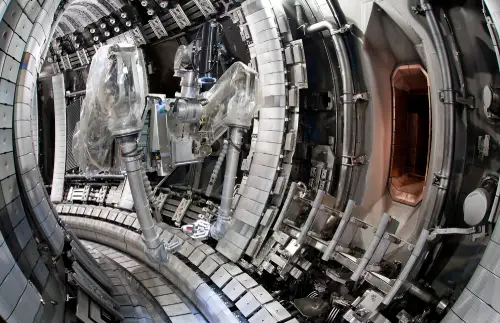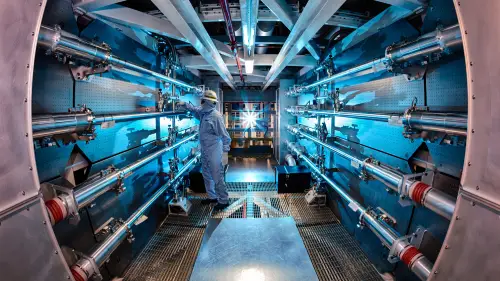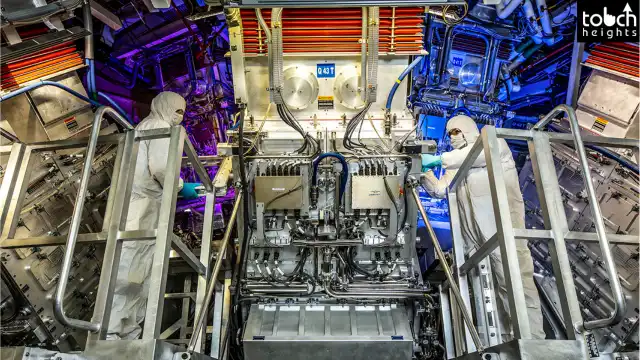The first net energy gain from a fusion reaction has been produced by scientists. The findings, which came from the Lawrence Livermore National Laboratory in California, represent an important development on the extremely long road to producing clean energy from nuclear fusion.
At a news conference announcing the breakthrough in Washington, DC, today, White House Office of Science and Technology Policy Director Arati Prabhakar stated, “Last week, lo and behold, yes, they launched a lot of lasers at a pellet of fuel, and more energy was produced from that fusion ignition than the energy of the lasers going in.” “This, in my opinion, is such a fantastic illustration of what tenacity can do.”
Atoms collide with one another, “fusing” to form a heavier atom and release energy in the process. This is nuclear fusion. Massive quantities of energy are produced when hydrogen nuclei in the sun and other stars combine to form helium. It has been extremely difficult to generate a net increase in energy because to create nuclear fusion on Earth, people must heat atoms to extremely high temperatures – millions of degrees Celsius.
In this instance, the national laboratory employed 192 powerful laser beams to strike a solid target of hydrogen isotopes that was only about the size of a peppercorn on December 5th at 1:03 AM local time. The target is protected by an expertly made-diamond shell.

“The shells of today are nearly spherical. “They have a little tube linked to them that is about a 50th the width of a hair through which the fuel is put into the shell, and they are 100 times smoother than a mirror,” said Michael Stadermann, manager of the Target Fabrication Program at Lawrence Livermore National Laboratory. We still have minute imperfections in our shells that are smaller than bacteria because perfection is extremely difficult to achieve.
3.15 megajoules of energy were created by the experiment, which is around 50% more than the 2.05 megajoules the lasers used to start the reaction. The researchers succeeded in “fusion ignition” by this, achieving a scientific energy breakeven.
Utilizing nuclear fusion might be revolutionary since it would provide mankind with a plentiful supply of energy without any unfavorable side effects, such as long-lasting radioactive waste or greenhouse gas emissions. However, doing so requires surmounting significant engineering obstacles. Today’s announcement marks a minor but important success over one of those challenges after decades of experimentation. But before nuclear fusion can realize any hopes for clean energy, there is still a very long way to go.

Since the 1950s, the US government has supported fusion energy research. The effort has received financing totaling tens of billions of dollars worldwide. And by the end of last year, researchers at the Joint European Torus (JET) in the UK had produced a record-breaking 59 megajoules of nuclear fusion energy. The main issue is that nuclear fusion in a lab has never been able to produce more energy than was required to initiate the reaction in the first place.
It’s a big step, but there are still some crucial limitations to be aware of. One crucial distinction is that the DOE is basing its success only on the lasers’ output, which is comparatively inefficient. Just to obtain the two megajoules of laser energy, 300 megajoules of grid electricity are required. So the announcement made today depends on a narrow interpretation of “net energy gain.”
Nuclear fusion may be achieved without the use of lasers. Other projects, like JET, use a Tokamak, a magnetic device, to contain and heat the plasma. Whatever the technique, producing energy this way in a power plant is probably decades away. To get there, a lot more money and little victories will be required; today’s announcement is one of them.
At the news briefing, the director of Lawrence Livermore National Laboratory Kim Budil noted, “With genuine investment and true effort, that timetable may draw closer.” We were in a situation where it never got any closer for a very long period, right? because we required this first essential action. Consequently, we’re in a terrific position to start learning about what it will take to build that next step.”
To begin with, researchers must be able to restart the ignition. “This is a one-time use, igniting capsule. You need to be able to achieve several fusion ignition events per minute to develop commercial fusion energy, according to Budil. There are extremely large obstacles, both in science and technology.
One difficulty is that any future efforts will require far more effective lasers. The National Ignition Facility, the system employed in this experiment, has the most energy and is larger than three football fields. But the technology it uses is still from the 1980s. Future initiatives will undoubtedly aim to include more recent technology in trials since modern lasers are more effective.







